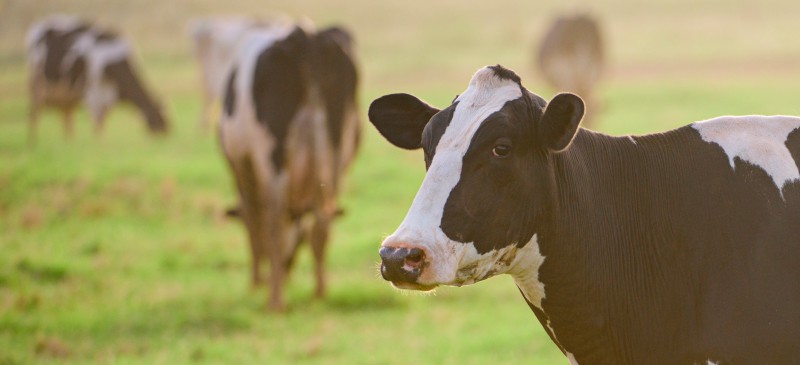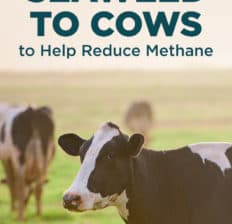This Dr. Axe content is medically reviewed or fact checked to ensure factually accurate information.
With strict editorial sourcing guidelines, we only link to academic research institutions, reputable media sites and, when research is available, medically peer-reviewed studies. Note that the numbers in parentheses (1, 2, etc.) are clickable links to these studies.
The information in our articles is NOT intended to replace a one-on-one relationship with a qualified health care professional and is not intended as medical advice.
This article is based on scientific evidence, written by experts and fact checked by our trained editorial staff. Note that the numbers in parentheses (1, 2, etc.) are clickable links to medically peer-reviewed studies.
Our team includes licensed nutritionists and dietitians, certified health education specialists, as well as certified strength and conditioning specialists, personal trainers and corrective exercise specialists. Our team aims to be not only thorough with its research, but also objective and unbiased.
The information in our articles is NOT intended to replace a one-on-one relationship with a qualified health care professional and is not intended as medical advice.
Giving Seaweed to Cows to Help Reduce Methane
December 19, 2021

Believe it or not, cows’ burps and farts are among the top contributors to global warming. Yes, you read that right — about 25% of all methane emissions is produced directly from fermentation by cows’ guts.
Agriculture — the process of creating food by cultivating plants and raising animals— is the No. 1 source of anthropogenic methane emissions. (“Anthropogenic” describes the type of environmental pollution that originates from human activity.)
It’s estimated that there are about 1 billion cattle roaming the planet. Not only is it costly to the environment to raise livestock because of all the space, water and feed that’s needed, but the livestock’s digestion actually makes the climate change situation even worse.
To deal with the enormous environmental impact that cattle are having on the environment, scientists have been working on methods for changing how cows’ stomachs digest food and produce gas. What can be fed to cows to reduce methane?
Researchers have been experimenting with feeding cows seaweed in an attempt to reduce the amount of methane they produce, and so far the result seem very promising.
Study Findings
When cows and other grazing ruminants, such as horses, sheep and goats, digest the foods they eat, they naturally produce methane gas (CH4) in their unique, microbe-rich stomachs. This is a huge concern considering that, in high amounts, methane released into the atmosphere acts as a very destructive greenhouse gas.
Researchers involved in several studies have found that adding small amounts of certain species of seaweed, including in the Asparagopsis family, to cows’ feed can help significantly reduce the amount of methane that the cows produce. One study found that seaweed supplementation could slash methane by about 20%, while another study done in Australia found freshwater microalgae could reduce methane by more than 97%!
In 2021, researchers from UC Davis College of Agriculture and Environmental Sciences reported findings after giving different amounts of seaweed to cows over a 21-week period. Adding seaweed into the cows’ diets was shown to reduce the enteric methane emissions of cows (methane released from cow burps) by as much as about 82%. The highest amounts of seaweed given had the strongest effects.
The UC Davis findings were published in March 2021 in the journal PLOS One. Researchers concluded:
“The persistent reduction of by Asparagopsis taxiformis supplementation suggests that this is a viable feed additive to significantly decrease the carbon footprint of ruminant livestock and potentially increase production efficiency.”
How does seaweed stop methane?
Asparagopsis seaweed is among the most studied species so far in terms of its ability to reduce methane emissions in cows. Seaweed species contain the compound bromoform within its oils, which directly inhibits microbes in a cow’s gut from forming methane.
This happens without disturbing digestion by changing the way certain enzymes work.
Because of the potential that seaweeds like Asparagopsis hold, seaweed farms are now springing up in places like the continental U.S., Australia and Hawaii.
For example, one U.S. startup called Blue Ocean Barns is quickly becoming a leader in this field. The company states: “Our special variety grows especially fast and at high densities, making it a cost-effective solution to 80% of burped methane.”
Is seaweed healthy for cows?
According to a 2020 research paper, seaweed seems safe for cows to consume, although more scientific research on its long-term effects is still warranted. Researchers are continuing to uncover more about seaweed’s potential risks and benefits for livestock, although it seems unlikely that it’s toxic to these animals.
So far, studies indicate that giving cows seaweed doesn’t impact their health, their appetites, or the flavor of dairy or meat produced by the animals. According to a report by CNBC, one important factor is that the seaweed doesn’t affect cows’ milk production, which means that farmers are more likely to use it.
One of the goals of using seaweed for cows is to reduce methane but at the same time not to burden farmers or reduce milk production.
Another impressive thing about the seaweed method is that it only takes a tiny amount of seaweed in cows’ feed to have major effects. In the studies mentioned above, seaweed/algae accounted for less than 1% of total feed.
Why It’s Important
Reducing methane emissions is at the top of the agenda for many environmentalists. For example, in September 2021, the U.S. and the EU together pledged to cut methane emissions by at least 30% by 2030.
Because livestock methane emissions are thought to be a leading contributor to global warming, giving seaweed to cows has great potential to help reverse climate change.
As one seaweed researcher told The Guardian, “cattle can be exceptionally powerful tools to tackle the climate crisis. Our invention reduces methane within 20 minutes after use, so it’s probably the most direct possible impact you can have on the climate.”
At this time, innovators in the seaweed industry are most interested in raising algae species that can be cultivated or farmed instead of being harvested in the wild. It’s thought that this approach may be most sustainable and can help guarantee quality production, reducing the risk for toxicity or seaweed shortages.
Impact on Environment
The Environmental Defense Fund states that “cutting methane emissions is the fastest opportunity we have to immediately slow the rate of global warming … Atmospheric concentration of methane is increasing faster now than at any time since the 1980s.”
Methane is a potent greenhouse gas that’s hazardous to the environment because it has more than 80 times the warming power of carbon dioxide over the first 20 years after it is released into the atmosphere.
Plus, as methane leaves the atmosphere through oxidization, it forms water vapor and carbon dioxide in the process. This means that methane is capable of contributing to global warming directly — plus it increases release of carbon dioxide, which also has long-lasting, damaging effects.
What makes greenhouse gases dangerous? As a greenhouse gas, methane absorbs infrared radiation (heat energy) and reradiates it back to Earth’s surface, trapping heat and producing substantial changes in climate. (In other words, it contributes to global warming.)
You might be wondering, why don’t people just stop eating so much meat?
Although the positive impact of feeding seaweed to cows seems promising, experts still emphasize that methane reduction from cows “is just a part of the puzzle.” Climate change activists still encourage people to do their part to slow global warming by:
- reducing consumption of dairy and meat
- shifting toward more plant-based diets
- embracing alternative sources of protein, such as beans and whole grains
- supporting regenerative agriculture practices
As one scientist puts it, “It’s not just about climate change and greenhouse gas emissions. It’s about losing natural habitat. Pastureland and crop production for livestock use up 77% of the planet’s farmed land (but livestock produces less than 20% of global calories), with consequences for ecosystems and wildlife.”
Activists for climate change are most focused on reducing methane emissions in Western countries, because that’s where meat consumption is the highest.
In lower-income countries, such as places in Africa, meat and dairy are often primary sources of essential nutrient,s such as vitamin B12 and vitamin A, along with calories in general. The addition of seaweed to cows’ feed may help people in these places continue to eat meat while still keeping methane under control.
Conclusion
- Cows’ burps and farts are among the top contributors to global warming. About 25% of all methane emissions is produced directly from fermentation by cows’ guts.
- Can seaweed cut methane emissions on cattle and dairy farms? Studies suggest that giving tiny amounts of seaweed to cows by adding it to their feed can reduce methane production in their guts by changing the way certain microbes and enzymes work.
- Studies have found this approach might reduce emissions by cows anywhere between 30% and 90%, depending on the feed type and amount.
- Seaweed seems to have no negative impact on the animals’ appetites or the flavor of dairy or meat.




